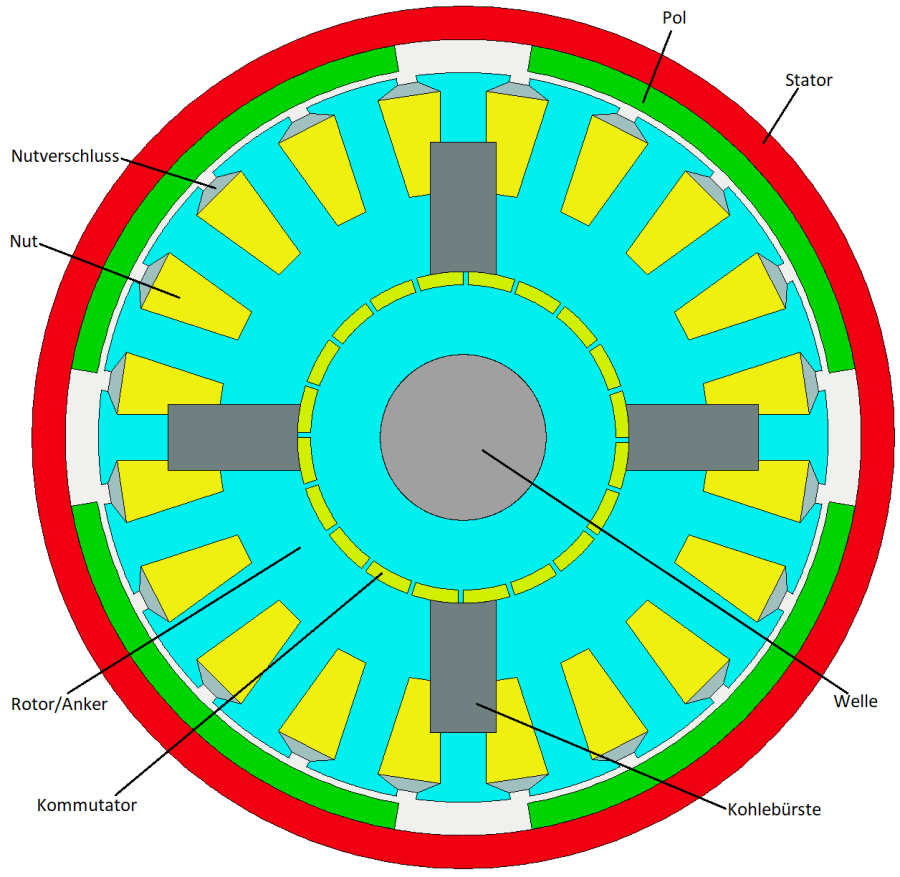How does a DC motor work?
The brushed direct current (DC) motor - or also called brushed direct current (BDC) - is the oldest, electrical machine and is manufactured in various designs. When DC motors are referred to, BDC motors are usually meant. Basically, these consist of a stator, a rotor and a commutator.
A particularly compact design is the "permenent magnet" (pm) excited - or permanently excited - DC motor, in which, unlike the externally excited DC motor, the magnetic field is generated via permanent magnets. In a separately excited DC motor, the magnetic field is generated via an excitation winding in the stator, which must be supplied with a separate power supply unit. The rotor has a winding into which a current is impressed, resulting in rotary motion. The underlying principle, is the force on current-carrying conductors in a magnetic field, also known as the Lorentz force. For the motor to rotate continuously, it must be ensured that there is always the same direction of current under the poles. This is ensured by the commutator, which consists of individual copper laminations to which the winding ends are attached. Carbon brushes, which are supplied with an external voltage, are attached to the commutator.

How does the rotor spin?
These brushes always short-circuit two copper laminations of the commutator, thus ensuring that the same direction of current is always present under the poles. This type of commutation can cause problems in DC motors whenever the time for changing the current direction is too short due to high speeds or when there are too few laminations. In this case, we talk about undercommutation. As a result, the current cannot change direction quickly enough and a spark, also called brush fire, occurs, which causes the carbon brushes to wear more quickly and additionally increases the temperature in the motor.